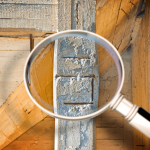What Is Structural Damage On a House? An Expert Weighs In
Structural damage is a dire concern that can jeopardize the very foundation of a house, undermining its stability and safety. Understanding the nature and implications of structural damage is of paramount importance for homeowners and prospective buyers alike.
Common causes of structural damage include natural disasters, poor construction practices, and water damage. It’s important to look for signs such as cracks, uneven floors, and sticking doors.
In this comprehensive article, we turn to an expert in the field who delves into the depths of structural damage, unraveling its causes, signs, and potential consequences it poses.
By shedding light on this critical subject, we aim to empower readers with the knowledge needed to identify, address, and prevent structural damage, ensuring the longevity and structural integrity of their homes.
Defining Structural Damage
In-home maintenance and safety, understanding the precise definition of structural damage is paramount. Structural damage refers to any deterioration, impairment, or compromise that directly affects the stability, strength, or integrity of a building’s structural components.
These components include load-bearing walls, foundations, beams, columns, and other essential elements that support the structure’s weight. Structural damage can arise from various sources, such as natural disasters, subpar construction practices, or long-term neglect.
The repercussions of structural damage can be far-reaching, extending beyond mere cosmetic issues. Left unaddressed, it can lead to severe safety hazards, escalating repair costs, and a significant decline in the property’s overall value.
The Importance of Home Structural Repair
Structural damage can compromise the stability and safety of the entire structure, posing a significant risk to occupants and necessitating immediate attention. Home structural repair, therefore, becomes imperative when faced with structural damage.
It involves a comprehensive assessment of the affected areas by qualified professionals, such as structural engineers or contractors specializing in structural repairs. These experts possess the expertise and knowledge to identify the root causes of the damage and develop appropriate remediation strategies.
The Process of Home Structural Repair
Home structural repair typically begins with a thorough inspection to determine the extent and severity of the damage. This evaluation helps formulate an accurate diagnosis and devise a tailored repair plan.
Various repair techniques may be employed depending on the nature and severity of the structural damage. These may include reinforcing weakened load-bearing elements, stabilizing foundations, addressing water intrusion issues, or rectifying pest-related damage.
It is crucial to emphasize that structural damage should never be taken lightly or postponed. Even seemingly minor issues can rapidly escalate, resulting in significant safety hazards or structural failure.
Common Causes of Structural Damage
Understanding the root causes of structural damage is pivotal in the realm of home maintenance and preservation. Several factors can contribute to the deterioration and compromise of a home’s structural integrity, warranting timely and effective home structural repair.
By examining these common causes, homeowners can gain valuable insights into potential vulnerabilities and take proactive measures to mitigate their risks.
Natural Disasters
One prominent cause of structural damage is natural disasters and severe weather conditions. Catastrophic events such as earthquakes, hurricanes, floods, and tornadoes can exert immense force on a home, subjecting it to substantial stress and strain.
The resulting structural damage can manifest as cracked walls, shifted foundations, or complete collapse. It is imperative for homeowners residing in areas prone to such events to fortify their homes against these natural forces and seek professional assistance in assessing and reinforcing their structures.
Poor Construction
Another culprit behind structural damage lies in poor construction practices and substandard materials. When builders cut corners, disregard building codes, or employ low-quality materials, the structural integrity of a home becomes compromised. Weak foundations, inadequate support beams, or improperly installed load-bearing walls can all contribute to structural damage over time.
To prevent such issues, homeowners should ensure their homes are built by reputable contractors who adhere to industry standards and utilize quality materials.
Water Damage
Water damage and moisture infiltration also rank high among the causes of structural damage. Persistent leaks, improper drainage, and unchecked moisture buildup can lead to rot, decay, and weakening structural components. Wood framing can become compromised, leading to sagging floors, weakened walls, and potential mold growth. Promptly addressing water-related issues, repairing leaks, improving drainage systems, and ensuring proper ventilation are crucial steps to safeguarding a home’s structural integrity.
Pests
Pests, particularly termites, can wreak havoc on a home’s structure, causing significant damage requiring immediate structural repair. These silent invaders can weaken wooden structures from within, compromising load-bearing beams and foundations.
Regular inspections for termite infestations and timely pest control measures are essential in preventing substantial structural damage and preserving the stability of a home.
The Consequences of Ignoring Structural Damage
When structural damage is disregarded or overlooked, the consequences can extend beyond superficial concerns. Ignoring signs of structural damage poses significant risks to the occupants and a home’s overall integrity. Timely intervention through proper home structure repair is paramount to mitigate these perils and safeguard the value and safety of the property.
Compromised Structural Integrity
One of the most critical consequences of neglecting structural damage is the compromised structural integrity of the home.
Structural components compromised by damage, such as cracked foundations, weakened load-bearing walls, or damaged support beams, cannot bear their intended loads.
This can lead to structural instability, severely compromising the home’s ability to withstand normal or extreme forces. Without appropriate repair measures, the entire structure may be at risk of collapse or further deterioration, jeopardizing the safety of those residing within.
More Expensive Repairs
Escalating repair costs are another grave consequence of ignoring structural damage. What may initially appear as a minor issue can quickly worsen over time.
Small cracks can widen, foundations can continue to settle, and water damage can spread, exacerbating the extent and complexity of repairs required.
As the damage progresses, the costs associated with remediation efforts increase exponentially. Neglecting structural damage only postpones the inevitable, resulting in more extensive and expensive repairs down the line.
Address Your Structural Damage Case with Hudson Douglas Public Adjusters
Don’t let structural damage compromise the safety and value of your cherished home. At Hudson Douglas, we understand the urgency of home structure repair and the importance of timely resolution.
Whether you’re dealing with damage from fire, smoke, water, weather events, or other covered losses, our team is here to represent you, not the insurance company. With our expertise and dedication, we’ll ensure your insurance claim is swiftly resolved and that you receive a fair settlement value. Call us at 480-320-9580 or fill out our online form today.




